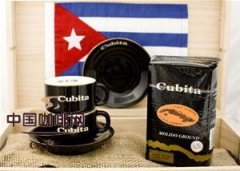Boutique Coffee several world-famous types of coffee
1. Jamaica Mention Jamaica and we immediately hear Blue Mountain coffee. The rare and expensive true Blue Mountain bean originated from Wallensford Coffee Garden, but now it has been extended to the Blue Mountain Mountains at an altitude of more than 1,000 meters. As long as the tree species and processing procedures of the estate meet certain standards, the government will issue a certificate authorizing the use of the name "Blue Mountain". It used to be the protagonist of coffee mythology, but unfortunately many people think that the legendary characteristics-rich aroma, complete texture, and even taste of the perfect combination of sour-are no longer, fifteen years ago there is a good sour, now can only be found in memories. In spite of this, its price is still rising. In Taiwan, the retail price of raw beans with guarantee is usually more than 2000 yuan per kilogram. In the raw bean market where sacks are widely used, Blue Mountain beans that insist on drum packaging are particularly valuable. "Jamaica High Mountain" refers to coffee beans grown in other hills below a kilometer on the island, which are of a more ordinary quality and have a mild texture and acidity. As for Blue Mountain Blend or Blue Mountain Style, it's usually a blend based on good Colombia beans, intended to mimic the taste of Blue Mountain. There's no absolute connection to Jamaica, and you won't find any real Blue Mountain beans in Blue Mountain Style.
2. The beans grown in the Dominican Republic are often called Santo Domingan (their old name), and the coffee plantations there are mainly around the mountains in the center of the island. There are four kinds of washed alpine coffee on the market: Cibao, Bani, Ocoa, Barahona, and the latter three are especially praised. The soft ripe fruit sweetness of Barahona is similar to that of Haiti coffee; Barahona has a higher acidity and a thick texture typical of Caribbean beans, closer to that of Jamaica mountains in quality and character. Bake to medium depth to highlight their sweetness.
3. Cuba Cigars, coffee and sugar cane are the three major industries of the Republic of Cuba and enjoy a high reputation in the world. Cuban Crystal Mountain Coffee ranks among the top in the world. Crystal Mountain is adjacent to the Blue Mountains of Jamaica and has similar climatic conditions, comparable to Jamaica Blue Mountain Coffee. Similarly, the annual output of imported coffee from Cuba's Crystal Mountain is not high, so there are prices but no markets in many cases. The most representative is Cuba's three major coffee "Cubita Coffee", known as the unique Caribbean flavor of coffee, become the Cuban Embassy designated coffee.
4. Puerto Rico beans, named Yauco Selecto, are the best examples of Caribbean beans, rich in texture, balanced in taste, gentle but complex with depth. Deep-roasted Caribbean beans, without the harsh, burnt taste common to other deep-roasted beans, are suitable for Plunger or French Press and other long-soaking cooking methods.
5. Yemen The word Mocha has many meanings. Around 600 AD, the first coffee beans far away from their hometown-Ethiopia-took root in Yemen on the other side of the Red Sea, and since then the coffee industry has been launched all over the world. Since the most important port of export for Yemeni coffee in the early days was Mocha Port (now silted), Yemeni coffee was also called "mocha" beans; over time, some people began to use "mocha" as a nickname for coffee, similar to the current situation of "Java." Later, because mocha coffee has a chocolate-like aftertaste, the term "mocha" was extended to a mixed drink of hot chocolate and coffee. Therefore, the same is "mocha", mocha beans, mocha pot and mocha coffee in Italian coffee, representing three meanings. Yemen mocha today is no different from its ancestors more than 1,000 years ago, and it is still the highest level of traditional hand-dried beans-although it varies in size and has a lot of impurities in raw beans. The two most commonly seen origins are Matari and Sanani; Matari beans have more texture, chocolate and acidity, while Sanani beans are more balanced and fragrant. Generally speaking, mocha beans are small in average size, with a wild spicy flavor of ginger, bright and distinctive taste, pleasant fruit acidity, and rich wine-like texture. No wonder they are known as Bordeaux wines in coffee. In mixed coffee, mocha usually plays the role of treble, responsible for stimulating flavor.
6. Ethiopia's highlands are the birthplace of coffee. In the eastern part, near Harrar, the ancient capital, mocha beans (Harrar,Harari,Harer or Harar) are still produced by traditional drying methods at an altitude of about 2,000 meters above sea level. Halal's texture is medium, with a fruity, wine-like flavor, good Halal's wildness is comparable to the best Yemeni mocha. Dried beans from other regions, such as Gimbi or Ghimbi, Jima,Jimma or Djimah, and Sidamo, are equally wild and wine-like, but less rich and coarse in texture. Washed mocha from West Kimby has the same acid as Harrah's, but packaged with a richer, more balanced feel and heavier texture. For washed beans from the south, such as Sidamo and Gemma, less wine acid is preserved and more tender lemon and flower flavors are substituted. The best of the best is produced in a small, higher area of sidamo called Yirgacheffe, which has a rich taste that brushes through the taste buds and leaves an endless aftertaste. The slightly sour taste is similar to Sumatra and moves downstream from the rich texture. In addition, it adds a unique soft floral fragrance, which is truly the only coffee in the world.
7. Tanzania Most Tanzanian beans are grown in Mr. Kilimanjaro and Mt. Meru near the northern Kenyan border. The Meru area is commonly referred to as "Krimanjaro" and is occasionally named after Moshi or Arusha. On the south side of the border, a little washed arabica beans are also produced, named after the nearby city of Mbeya or the distribution center of Pare. The classification is similar to Kenya, with English letters distinguishing sizes. Most Tanzanian beans have typical African bean characteristics. The better crimenjaro is similar to regular Kenya, has a thick texture, is usually milder in acidity than Kenya, and evenly stimulates the middle and lateral taste buds at the back of the tongue. It tastes a bit like a tomato or soda. As for the southern beans, they are comparable to the second-grade washed mocha, with a soft and pleasing weak acid, a round taste, and a medium texture. Beans from neighbouring Malawi also have qualities similar to those of Tanzanian beans.
8. Uganda (Uganda) in the east near the Kenyan border in the western slope of the Egon Mountains (Mr. Elgon), producing a fairly good Arabica beans, called Bugisu (Bugishu), flavor and Kenya is similar, but the texture is thinner.
9. Zimbabwe is also a typical East African bean. Good Zimbabwe has a medium texture, but its strong acidity and fruit wine tone can be compared with Kenya, and it also has a hint of black pepper. The finest Zimbabwe beans are grown in the eastern region near Mozambique and are graded according to size, with 053 being the highest.
10. Costa Rica Costa Rica's high latitudes produce coffee beans that are famous in the world for their rich, mild taste, but extremely acidic, and the beans are carefully processed to produce high quality coffee. The famous coffee is produced in the Central Plateau, where the soil consists of successive layers of volcanic ash and dust. Global coffee prices continue to rise as major buyers seek higher quality coffee, while coffee producers Uganda, Rwanda and Ethiopia are in the midst of harvest season, Kenya's Standard newspaper reported. East African countries are at higher altitudes and coffee plantations are usually small-scale operations, and African growers are better able to care for coffee trees than large-scale plantations like Brazil, industry sources say.
11. Kenya coffee is grown near the Kenyan mountains in central Kenya and is sometimes named after the capital Nairobi to ensure its quality. Here beans are graded according to size, the largest is AA, then A and B, etc., and have nothing to do with the origin, so the same AA beans, quality and characteristics may vary greatly. Except for Yemen and Ethiopia's dry mocha, most coffee on the continent is washed. With state support, Kenya's washed arabica beans are of high average quality and are handled with considerable care. Good Kenyan beans not only have the same strong acid as mocha, stimulate the sides of the tongue, it even has mocha lack of rich texture, in African coffee, it can brew a balanced drink.
Important Notice :
前街咖啡 FrontStreet Coffee has moved to new addredd:
FrontStreet Coffee Address: 315,Donghua East Road,GuangZhou
Tel:020 38364473
- Prev

Amber Coffee is a unique Caribbean coffee.
Cubita Coffee (Amber Coffee) Cubita Coffee also has a high reputation in the coffee industry. Cuban Crystal Mountain Coffee ranks first in the world. Crystal Mountain is adjacent to the Blue Mountain Mountains of Jamaica, and its climatic conditions are similar to those of Jamaican Blue Mountain Coffee. Cubita adheres to the principle of perfect coffee, only making individual coffee and picking coffee beans by hand.
- Next

Basic knowledge Analysis of Fine Coffee main components of Coffee
The fiber of the main ingredient fiber raw bean will be carbonized after baking and combine with caramel to form the hue of coffee. The main source of protein calories, the proportion is not high. Most of the protein in coffee powder will not dissolve out when brewing coffee, so the intake is limited. Sugar: coffee beans contain about 8% sugar. After baking, most of the sugar will be converted into caramel, making coffee.
Related
- Beginners will see the "Coffee pull flower" guide!
- What is the difference between ice blog purified milk and ordinary milk coffee?
- Why is the Philippines the largest producer of crops in Liberia?
- For coffee extraction, should the fine powder be retained?
- How does extracted espresso fill pressed powder? How much strength does it take to press the powder?
- How to make jasmine cold extract coffee? Is the jasmine + latte good?
- Will this little toy really make the coffee taste better? How does Lily Drip affect coffee extraction?
- Will the action of slapping the filter cup also affect coffee extraction?
- What's the difference between powder-to-water ratio and powder-to-liquid ratio?
- What is the Ethiopian local species? What does it have to do with Heirloom native species?

